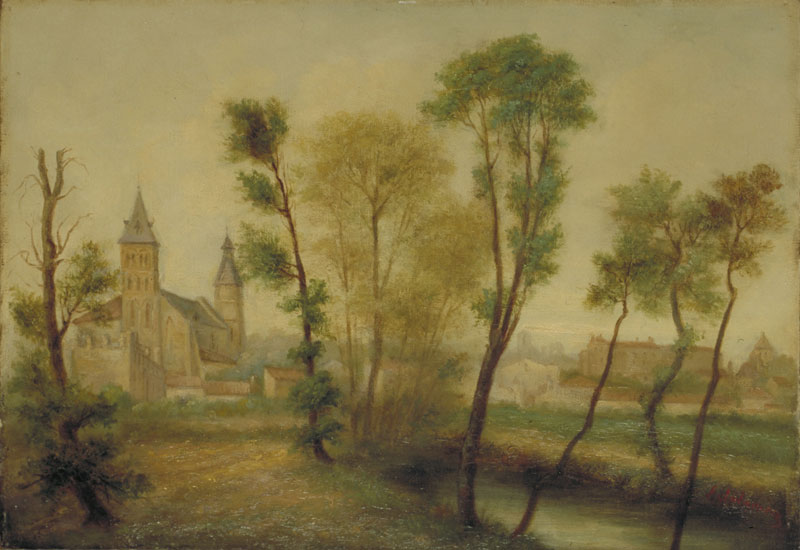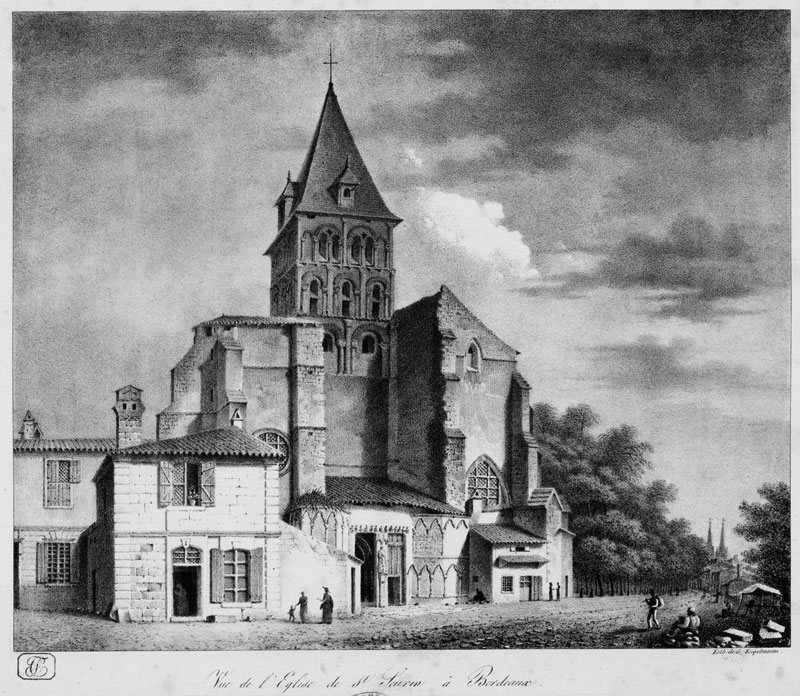Church of St. Seurin

L. Salomon. Eglise vers 1795. MBA. Bx M 908
© Archives Municipales de Bordeaux
Originally built outside the city walls, the Church of St. Seurin is considered as the great episcopal funerary basilica of Bordeaux. It bears the name of one of the most venerated patron saints of Bordeaux, St. Seurin, fourth bishop of the City. The existence of the first building is confirmed towards the mid 5th century. Destroyed during the 8th century Norman invasions, it was reconstructed above the crypt where St. Seurin lies from the 11th to 13th centuries, with the elevation of the Gothic portal. The Church was saved during the French Revolution and underwent important modifications throughout the 19th century, including the construction of a façade equipped with a new portal-porch concealing the Roman porch.

St-Seurin avant sa restauration. XIXe. AMBx. Fi XIX-G-8
© Archives municipales de Bordeaux
Now lost, the Church used to hold a precious relic, the ivory horn of Roland, who died at Roncevaux.
Tradition claims that this ivory horn, still reported in the 17th century and lost before the French Revolution, had been left by the Emperor Charlemagne on the altar of St. Seurin.
In 1998, UNESCO recognised the historical heritage of the Church of St. Seurin, adding it to the world heritage list as part of the pilgrim route to Santiago de Compostela.
